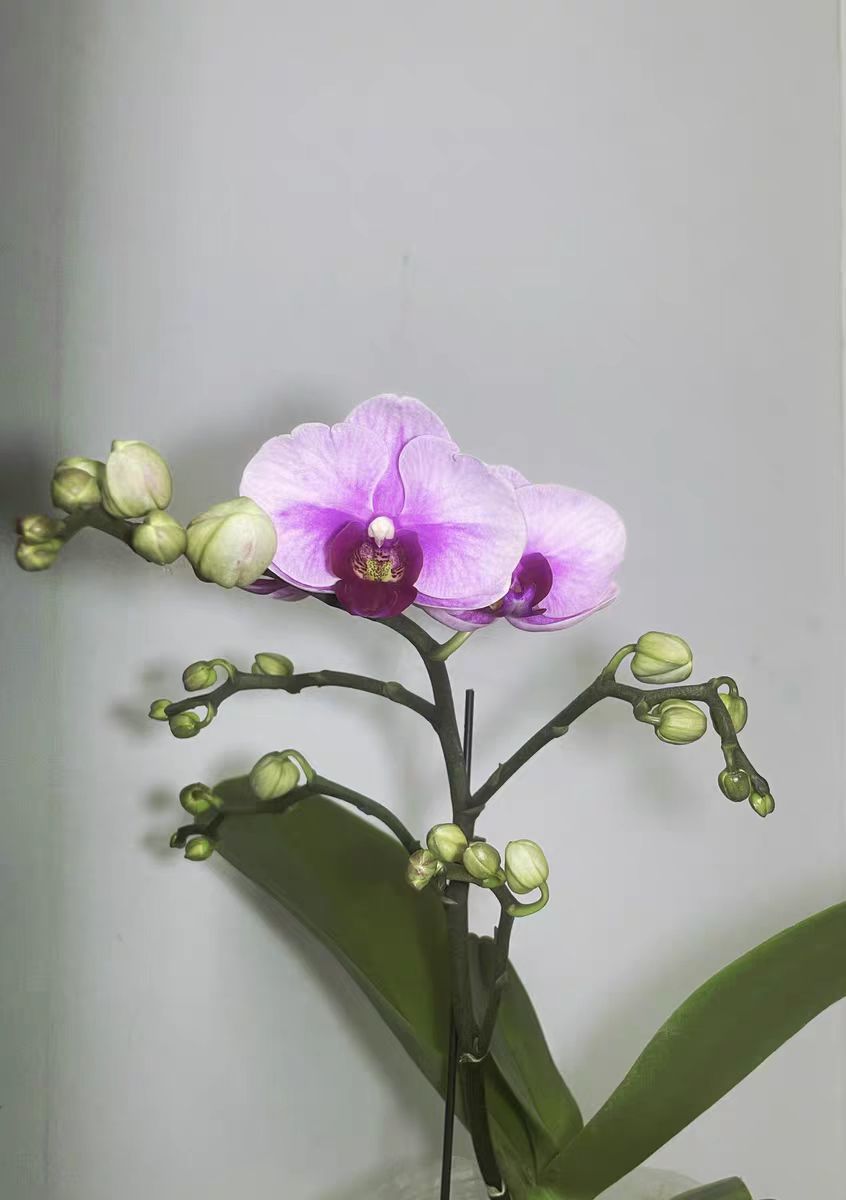Many novice flower growers are often unaware of the water requirements and adaptability of Phalaenopsis orchids. The following will conduct a detailed analysis of the water requirements and adaptability of Phalaenopsis orchids from aspects such as their growth environment, characteristics of water requirements, watering management techniques, and the influence of seasonal changes.
Phalaenopsis orchids are native to tropical rainforest regions and are epiphytic on tree trunks or rocks. This unique growth environment has given rise to their special water requirements. The roots of Phalaenopsis orchids are fleshy, thick, and rich in water storage tissues. They need a certain level of humidity to maintain growth, but are also extremely prone to rotting due to waterlogging. Therefore, the water requirements of Phalaenopsis orchids can be characterized as "liking water but fearing waterlogging".
Liking water: Phalaenopsis orchids prefer a moist environment. Their leaves and roots need to maintain a certain amount of water to perform normal physiological functions. Insufficient water can lead to shriveled and damaged roots, dull and wrinkled leaves, and in severe cases, it can even affect the growth and blooming of the plants.
Fearing waterlogging: The roots of Phalaenopsis orchids are very sensitive to waterlogging. Once there is too much accumulated water, the roots will quickly become moldy, causing plant diseases, and the flowers will wither prematurely. Therefore, special care should be taken when watering to avoid water accumulation at the bottom of the flower pot.
In order to meet the water requirements of Phalaenopsis orchids while avoiding the harm caused by waterlogging, we need to master the correct watering management techniques.
Understand the soil requirements: Phalaenopsis orchids like loose and well-drained media, such as specialized orchid soil or mixtures of perlite, moss, and charcoal. These media can maintain good air permeability and drainage, which is beneficial for the respiration and growth of the roots.
Master the timing of watering: Before watering, use your finger to probe the surface of the soil. Only when it feels dry should you consider watering. Avoid blindly watering when the soil is still moist to prevent waterlogging.
Control the amount and frequency of watering: Each time you water, ensure that the water can penetrate to the bottom of the medium instead of just staying on the surface. Try to follow the principle of "a small amount but multiple times" to avoid watering thoroughly at once, which may lead to water accumulation. Phalaenopsis orchids require less water in winter, so the frequency of watering can be appropriately reduced; while in summer, spring, and autumn, more frequent watering is needed to meet the growth needs of the plants.
Pay attention to the watering time: Morning or evening is the best time for watering. The temperature during these two periods is relatively low, and the water evaporates slowly, which is conducive to the plants' absorption. Avoid watering in the afternoon and at night because during these two periods, orchids are likely to absorb too much water, increasing the possibility of disease occurrence.
Maintain air humidity: Phalaenopsis orchids like a moist environment, but it doesn't mean they should be soaked in water. You can increase the humidity in the air by spraying or placing a tray filled with water to meet the plants' demand for humidity.
In conclusion, the water requirements of Phalaenopsis orchids are characterized by "liking water but fearing waterlogging". In order to meet their water requirements and avoid the harm caused by waterlogging, we need to master the correct watering management techniques, including understanding the soil requirements, mastering the timing of watering, controlling the amount and frequency of watering, paying attention to the watering time, and maintaining air humidity. At the same time, the watering strategy should be adjusted according to seasonal changes to adapt to the growth needs of Phalaenopsis orchids. Only in this way can healthy and beautiful Phalaenopsis orchids be cultivated.
Do Phalaenopsis orchids like water or not?

Share with
Tagged in :




Leave a Reply